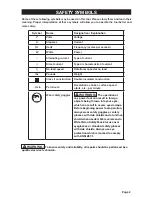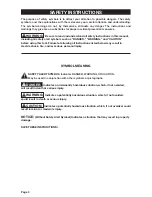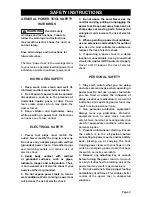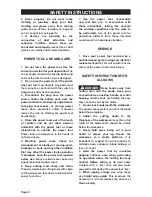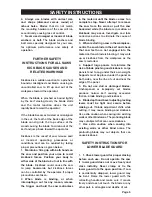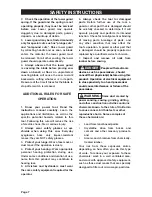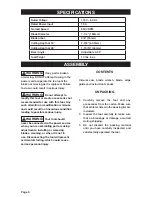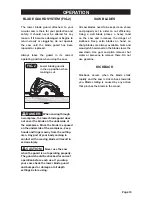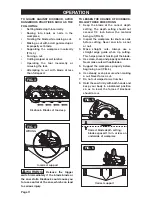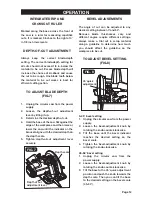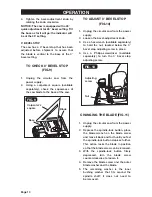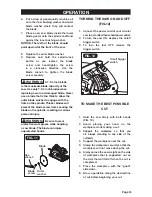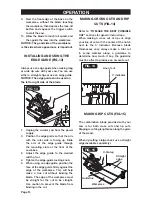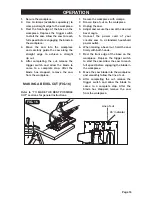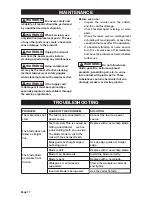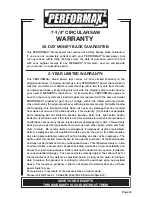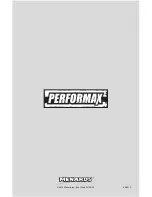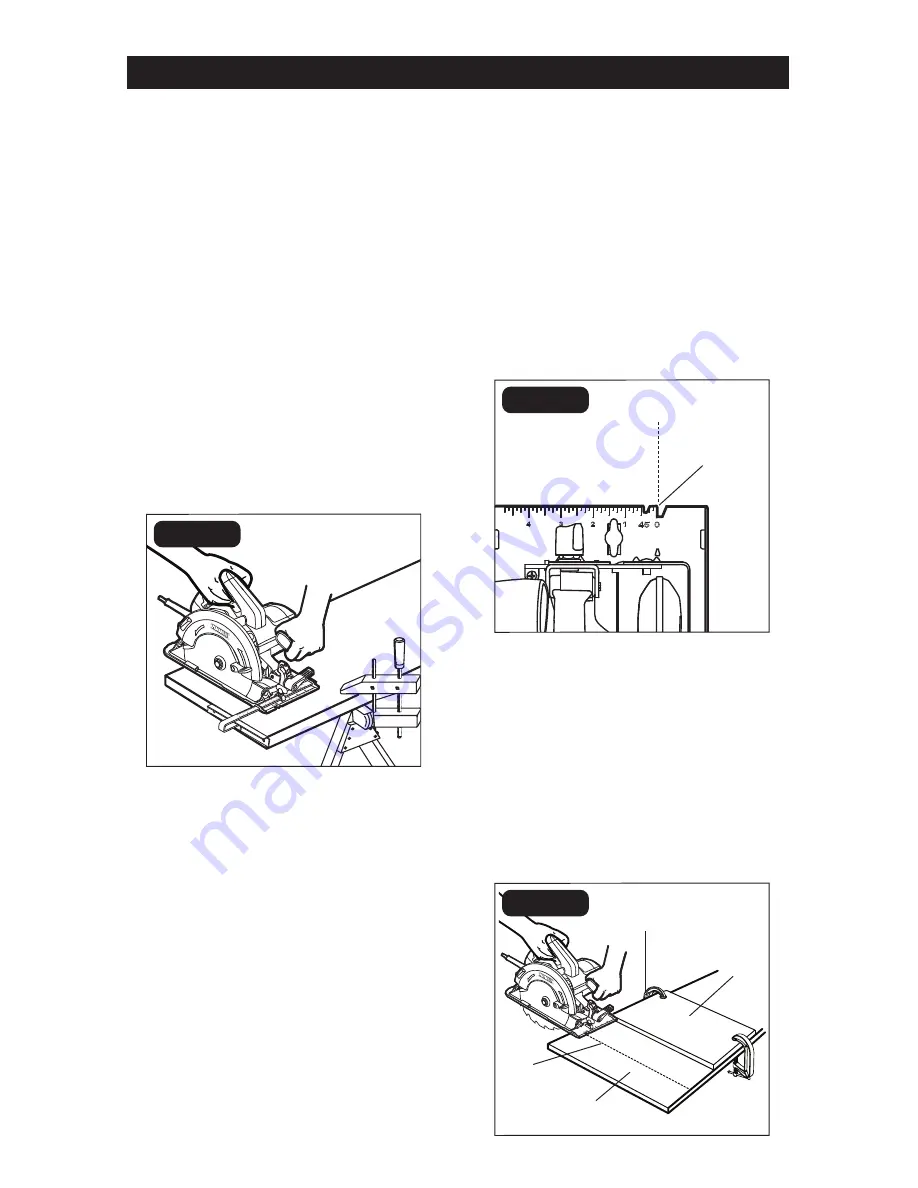
Page 15
OPERATION
9. Rest the front edge of the base on the
workpiece, without the blade touching
the workpiece, then depress the lock-off
button and squeeze the trigger switch
to start the saw.
10. Allow the blade to reach full speed, and
then guide the saw into the workpiece.
NOTICE: The good side of the workpiece
is the side where appearance is important.
INSTALLING AND USING THE
EDGE GUIDE (FIG.13)
Always use an edge guide when making long
or wide rip cuts with your saw. You can use
either a straight edge or use an edge guide.
NOTICE: The edge guide can be used on
the left or right side of the blade.
FIG. 13
1. Unplug the circular saw from the power
supply.
2. Position the edge guide so that the arm
with the ruler side is facing up. Slide
the arm of the edge guide through
the mounting slots at the front of the
saw base.
3. Adjust the edge guide to the desired
width of cut.
4. Tighten the edge-guide locking knob.
5. When using an edge guide, position the
face of the edge guide firmly against the
edge of the workpiece. This will help
make a true cut without binding the
blade. The edge of the workpiece must
be straight for the cut to be straight.
Use caution to prevent the blade from
binding in the cut.
MAKING CROSS CUTS AND RIP
CUTS (FIG.14)
Refer to “
TO MAKE THE BEST POSSIBLE
CUT
” sections for general instructions.
When making a cross cut or rip cut, align
your line of cut with the center of the notch
next to the 0° indicator. Because blade
thicknesses vary, always make a trial cut
in scrap material along a guideline to
determine how much, if any, the guideline
must be offset to produce an accurate cut.
FIG. 14
Line of cut
0° indicator
MAKING RIP CUTS (FIG.15)
The combination blade provided with your
saw is for both cross cuts and rip cuts.
Ripping is cutting lengthwise along the grain
of the wood.
When rip cutting a large sheet, use a straight
edge (available separately).
FIG. 15
C-Clamp
Guideline
Workpiece
Straight
edge


